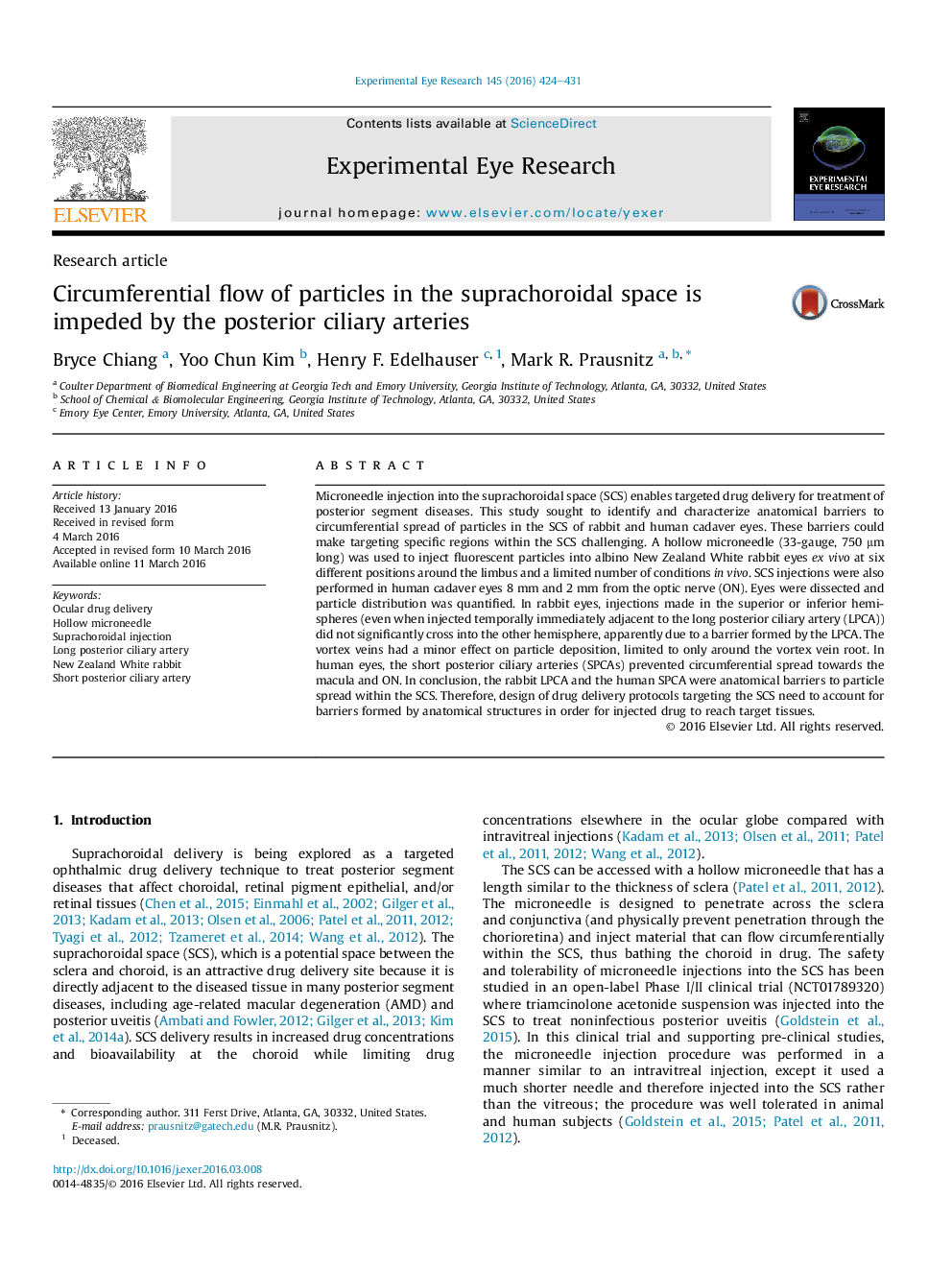| کد مقاله | کد نشریه | سال انتشار | مقاله انگلیسی | نسخه تمام متن |
|---|---|---|---|---|
| 6196509 | 1602577 | 2016 | 8 صفحه PDF | دانلود رایگان |
- Microneedles enable targeted drug delivery to specific regions within the suprachoroidal space (SCS).
- Anatomical barriers can impede spread of particles within the suprachoroidal space.
- Circumferential spread of particles in the rabbit SCS is blocked at the midline by long posterior ciliary arteries.
- Particle spread towards the posterior pole of the human SCS is blocked by short posterior ciliary arteries.
- Vortex veins in the rabbit do not appear to block circumferential spread of particles.
Microneedle injection into the suprachoroidal space (SCS) enables targeted drug delivery for treatment of posterior segment diseases. This study sought to identify and characterize anatomical barriers to circumferential spread of particles in the SCS of rabbit and human cadaver eyes. These barriers could make targeting specific regions within the SCS challenging. A hollow microneedle (33-gauge, 750 μm long) was used to inject fluorescent particles into albino New Zealand White rabbit eyes ex vivo at six different positions around the limbus and a limited number of conditions in vivo. SCS injections were also performed in human cadaver eyes 8 mm and 2 mm from the optic nerve (ON). Eyes were dissected and particle distribution was quantified. In rabbit eyes, injections made in the superior or inferior hemispheres (even when injected temporally immediately adjacent to the long posterior ciliary artery (LPCA)) did not significantly cross into the other hemisphere, apparently due to a barrier formed by the LPCA. The vortex veins had a minor effect on particle deposition, limited to only around the vortex vein root. In human eyes, the short posterior ciliary arteries (SPCAs) prevented circumferential spread towards the macula and ON. In conclusion, the rabbit LPCA and the human SPCA were anatomical barriers to particle spread within the SCS. Therefore, design of drug delivery protocols targeting the SCS need to account for barriers formed by anatomical structures in order for injected drug to reach target tissues.
Journal: Experimental Eye Research - Volume 145, April 2016, Pages 424-431
